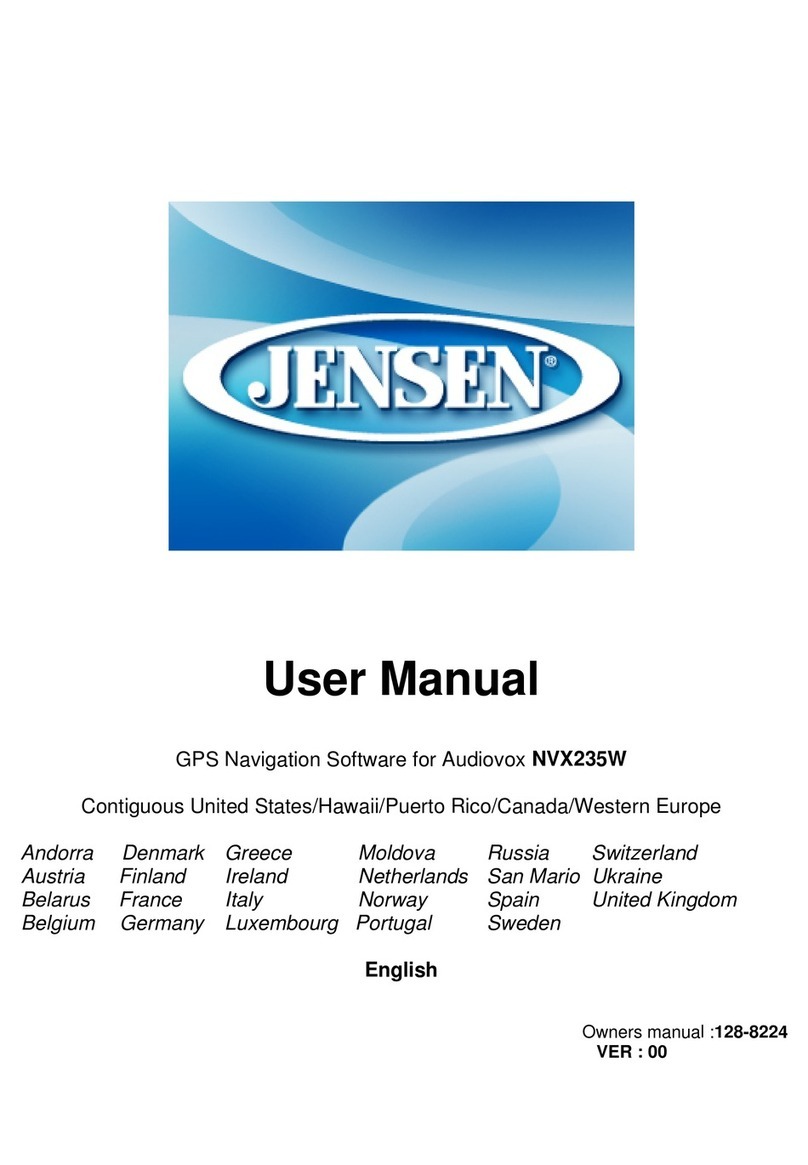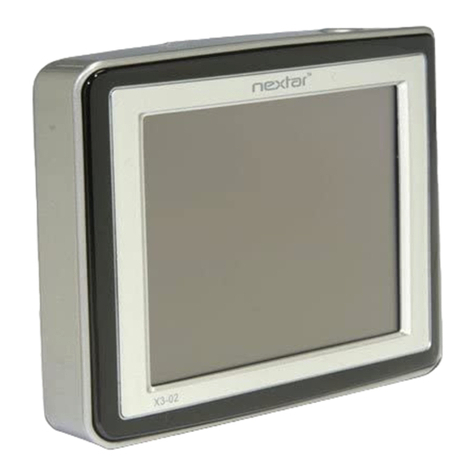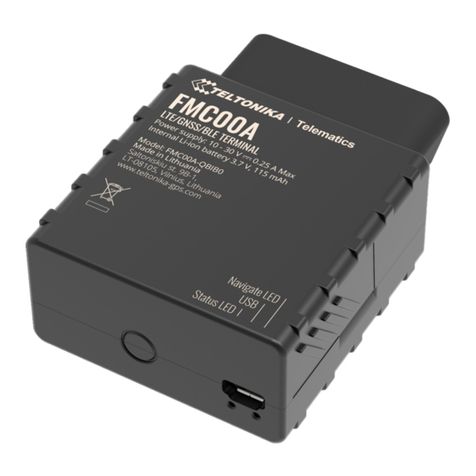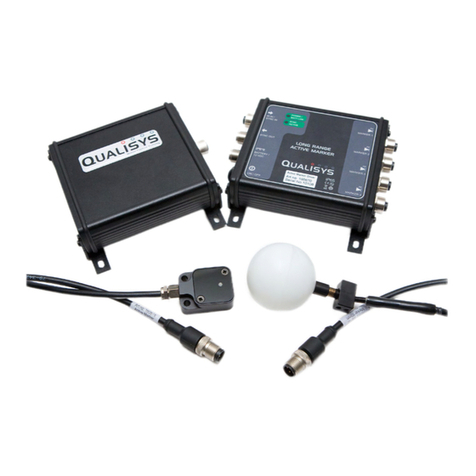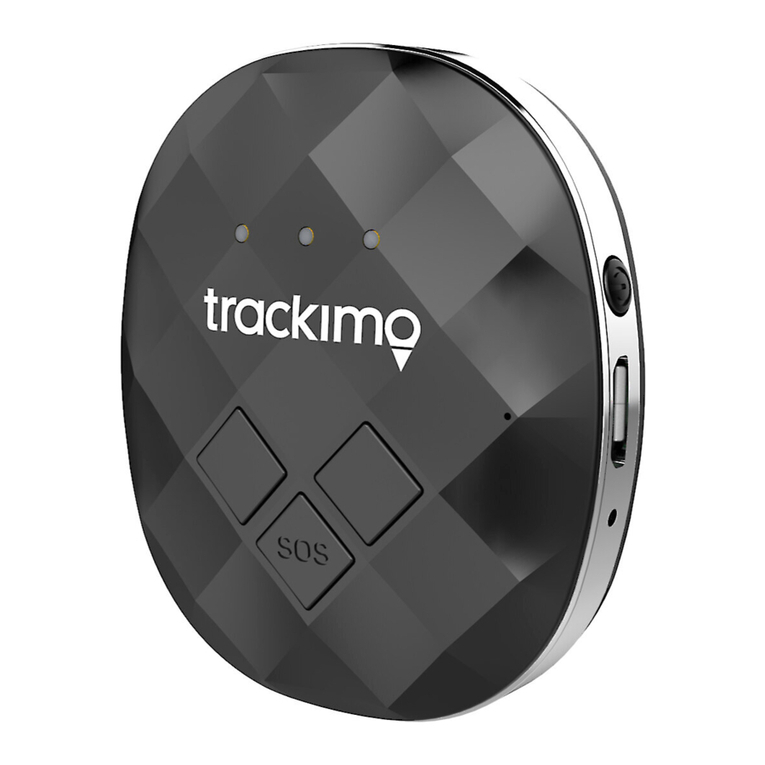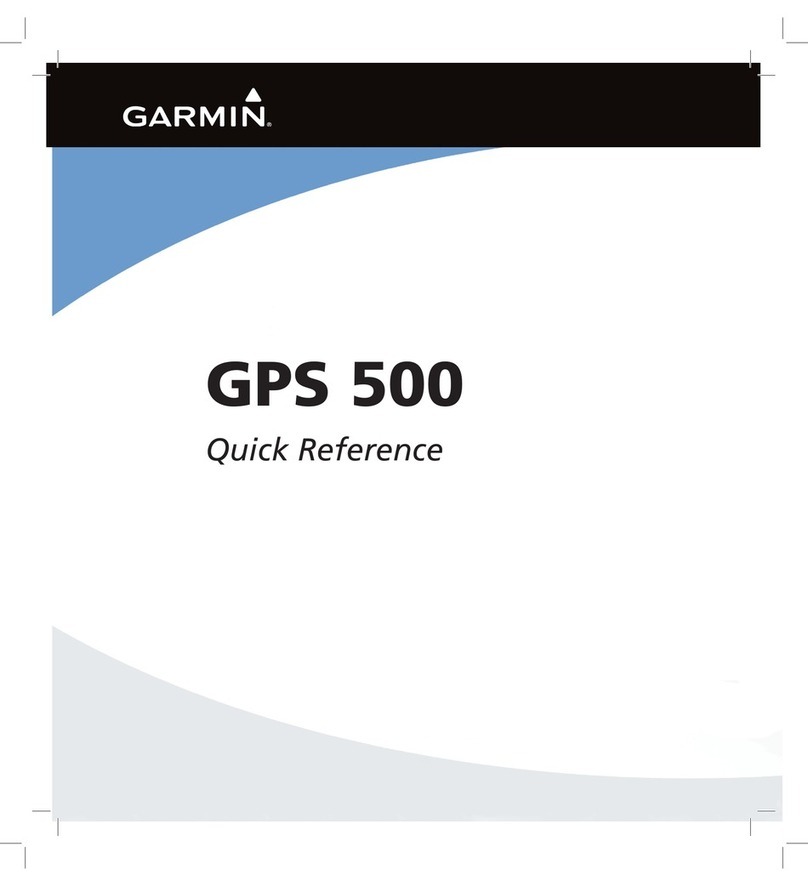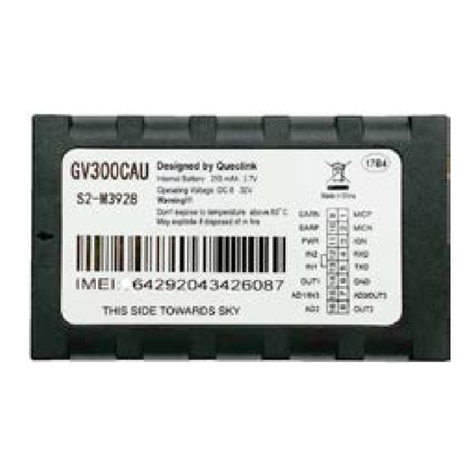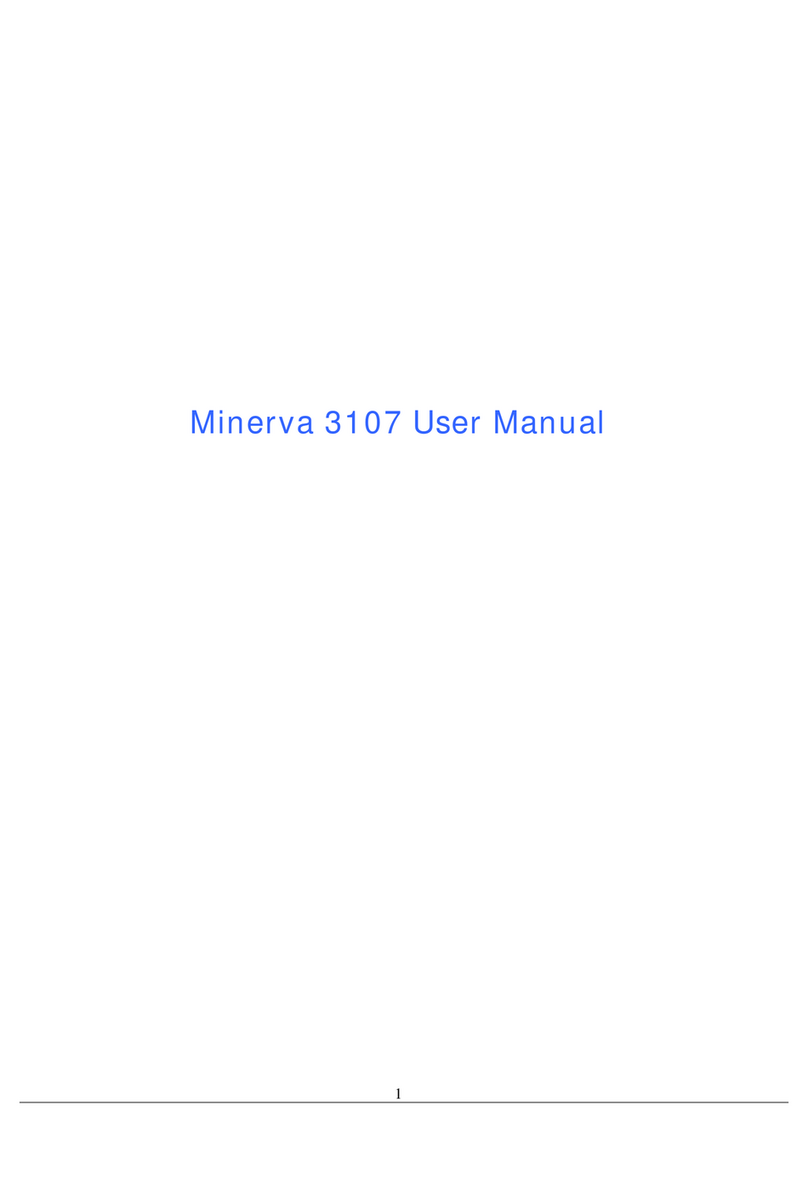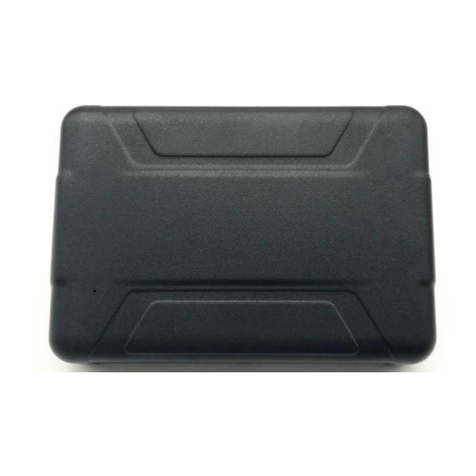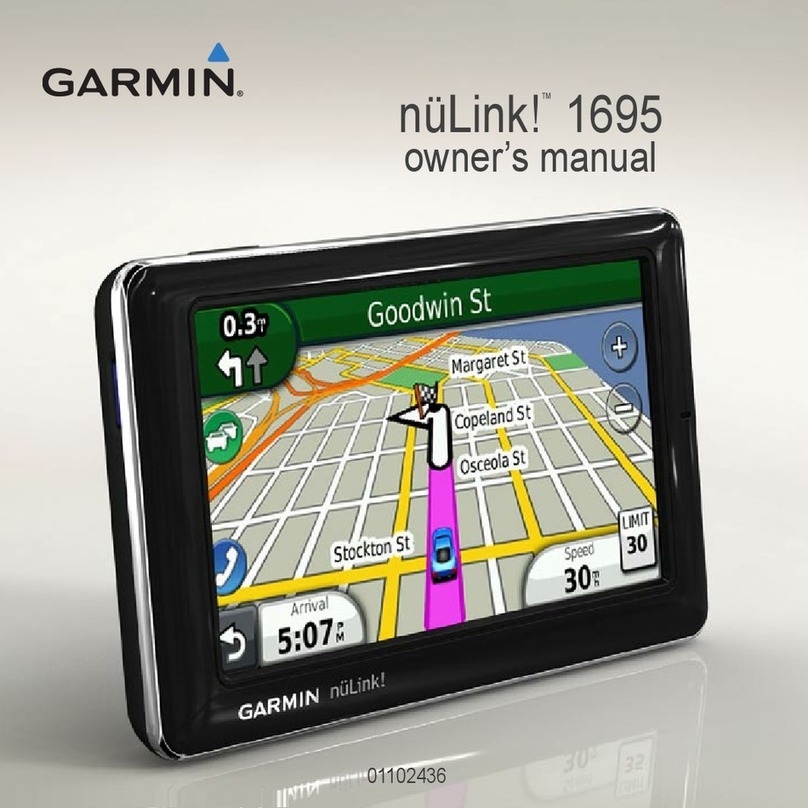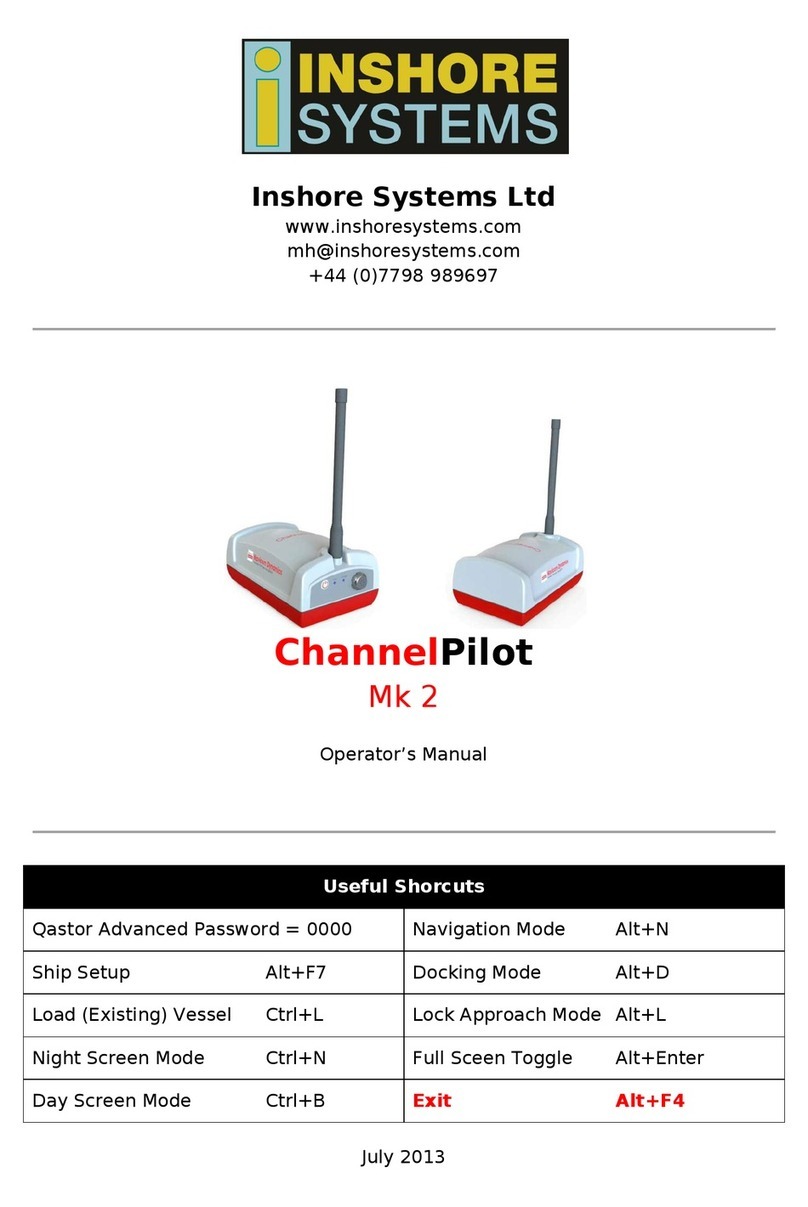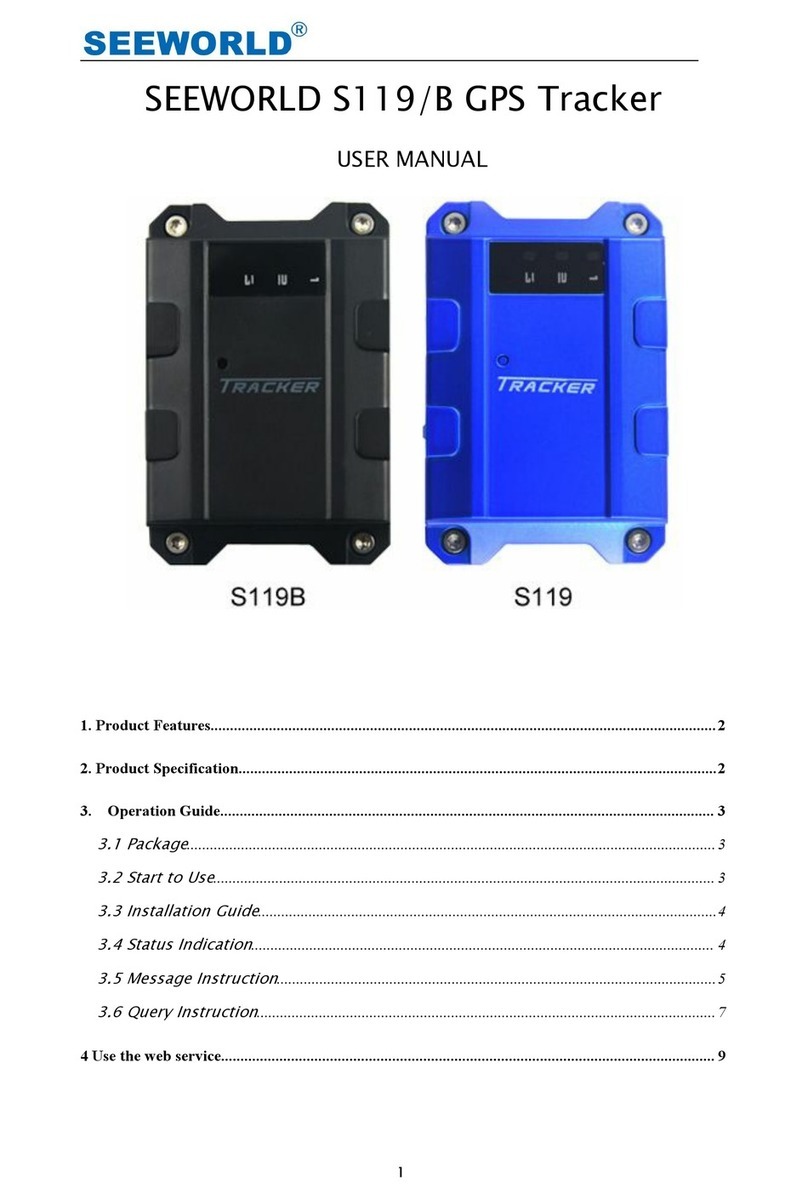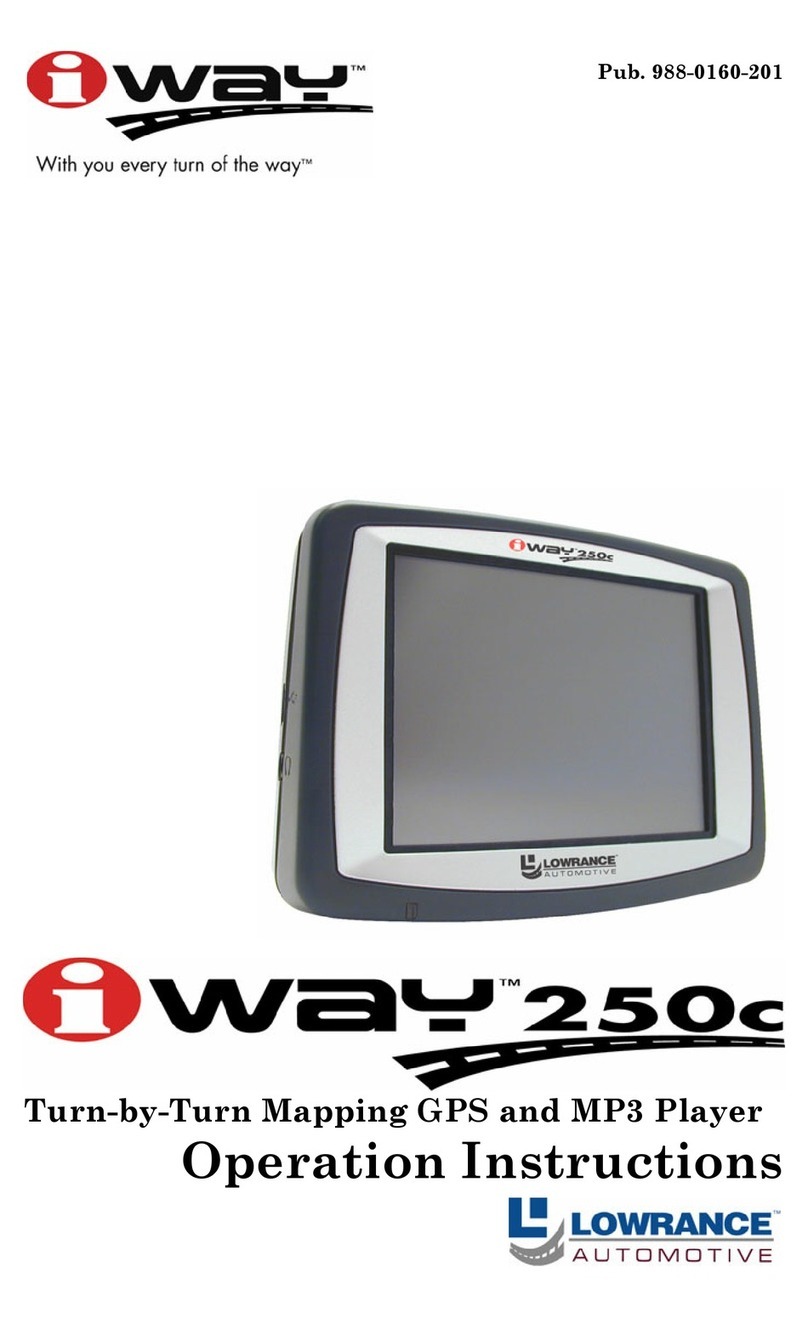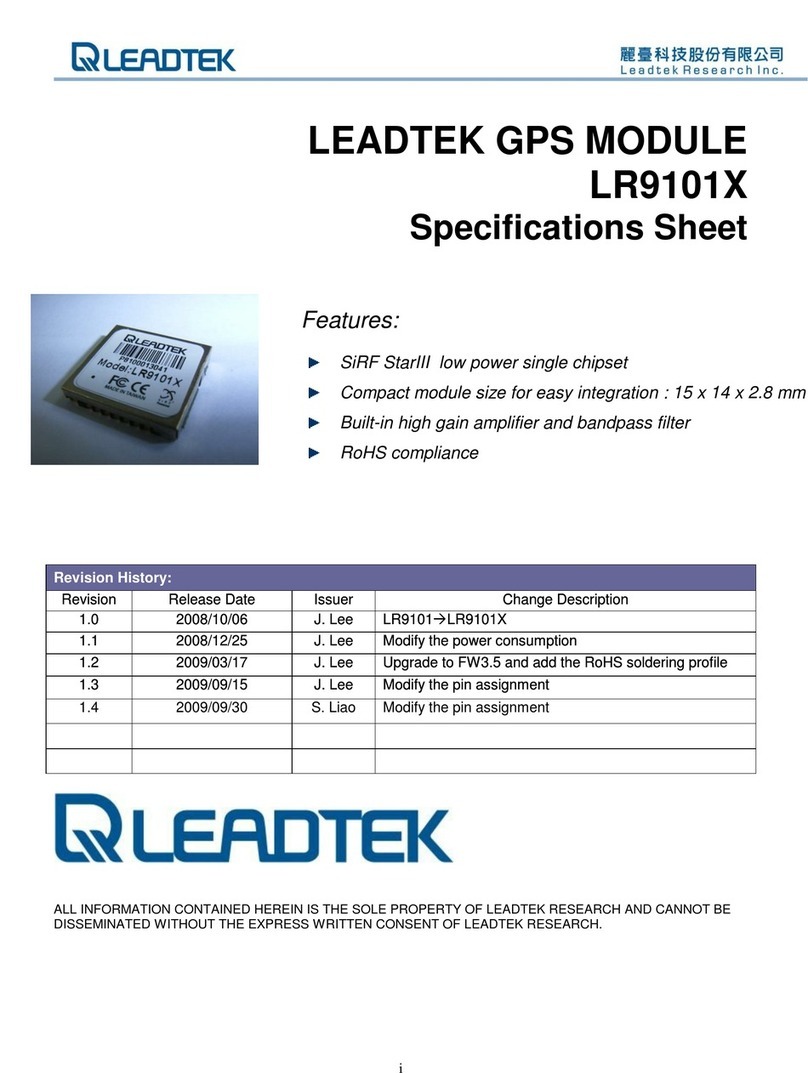TENDO MyUnit User manual

CONTENT
Overview
4
1 Technical description
5
2 Wireless Sensor Unit
6
2.1 Battery installation
6
2.2 Battery status indication
7
2.3 How to charge batteries
7
2.4 How to change batteries
7
2.5 How to attach sensor unit to barbells or exercise machines
8
3 Tendo MyUnit Application
9
3.1 Connecting wireless sensor with Tendo MyUnit App
9
3.2 How Tendo MyUnit app works
11
3.2.1 What is measured and calculated
11
4 Tendo MyUnit settings
12
4.1 Setting the Wireless Sensor Unit in Tendo MyUnit App
12
4.2 Audio signals - Optimal training range
13
4.3 Minimum movement threshold (MMT)
14
4.4 Maximum rest time between reps
15
4.5 Range for partial average power & peak force
15
4.6 Imperial units in lbs
17
4.7 Factory setting
17
5 What does Tendo MyUnit display?
18
5.1 Main numerical panel
18
5.2 Bar graph panel
20
5.3 Auxiliary results window
21
5.4 Displacement
22
5.5 Load
22
5.6 Exercise
23
5.7 Training goal
23
5.8 Command “Delete”
28
6 Saving an activity to MyUnit memory
28
6.1 New activity
28
www.tendosport.com
2

TENDO MyUnit
A weight lifting tracker for instantaneous feedback to promote athletic performances
Thank you for purchasing the Tendo MyUnit.
The purpose of the manual is to guide you through the first basic steps necessary to set up
the system and give you an idea of how to begin.
What comes as a part of the Tendo MyUnit?
-Wireless Sensor Unit
-Rechargeable Batteries (4x of AA size, type NiMH)
-Built-in Battery Charger
-AC / DC Power Supply Adapter
-User Manual
-Carrying Bag
-Tripod
-Mobile Phone Holder with a Magnet
What is optional?
-Tendo Bluetooth Set - wireless connection to a computer
-Tendo Unit computer software
www.tendosport.com
4

1. Technical description
The system consists of 2 functional components: Wireless Sensor Unit and Tendo MyUnit App
(running on iOS Mobile Phones).
*Mobile phone is not included in the package
The Wireless Sensor Unit is connected to a weight by a kevlar cord with a velcro strap.
In weight exercises, muscles lift a mass mby applying a force Fat a velocity v, produces average
power P."
F = m x g"
P = F x v
www.tendosport.com
5
WIRELESS SENSOR UNIT
TENDO MyUnit APP
Standard
WL
Set 1

"
The system measures vertical Average and Peak Velocity of the weight lifted.
By using the known mass, the system also calculates Average Power, Peak Power and Peak
Force in the concentric phase of weight training.
To calculate Peak Power and Peak Force, the system uses equation:
P = F x v , where F = (m x g) + (m x a) , g-acceleration of gravity and a-acceleration
The system also measures downward average velocity; rest time between reps or sets;
displacement; concentric, eccentric and total work time.
2 Wireless Sensor Unit !
2.1 Battery Installation
New rechargeable batteries are pre-installed in a battery compartment."
Before the sensor unit is operated, it is necessary to pull out a safety plastic strap from the battery
compartment to release the battery contact. The rechargeable batteries come pre-charged, ready
for use.
The Tendo MyUnit has a built-in battery charger. To charge the batteries, use the AC / DC power
adapter (included).
Power supply input adapter: 110 - 230V AC, 50-60 Hz Output: 12V DC, 1.2A
*** Use only NiMH, AA size rechargeable batteries, 2000 - 2500 mAh! ***
www.tendosport.com
6
Battery case
Power supply connector

2.2 Battery status indication
If the batteries need to be charged, the sensor unit will lit red light.
Tendo MyUnit also displays the sensor unit's current battery charge in the upper left corner of the
app's main window.
2.3 How to charge the batteries
1. Connect the power adapter to 110 - 230V AC power outlet
2. Plug the connector into the Power Supply Connector on the front panel of the Wireless
Sensor Unit
Battery status indication while charging the sensor unit:
-red light indicates low voltage —> batteries need to be charged
-red light —> also accompanies the charging process
-once the red light is turned off the batteries are sufficiently charged —> end the charging
process
2.4 How to change the batteries
1. Open the battery compartment
2. Remove old batteries
3. Referring to the insert drawing, place the batteries into the compartment. Press 4 batteries
into the battery compartment. MAKE SURE that the positive ends of the batteries (marked “+“
are touching the springs (marked “+“) in the battery compartment.
*** Use only NiMH, AA size rechargeable batteries, 2000 - 2500 mAh! ***
If the batteries are correctly positioned in the battery compartment, when turned on, the sensor unit
illuminates with a pulsing blue light.
If the sensor unit is turned on and is lit with red light (low battery charge), the batteries need
charging.
!! If the sensor unit does not lit up, please check the polarity of inserted batteries !!
!! Tendo MyUnit can also be used when the batteries are charging !!
www.tendosport.com
7

2.5 How to attach Sensor Unit to barbells or exercise machines?
Fasten the sensor unit cord to a bar, dumbbell or top weight of a weight stack with the Velcro strap.
Position the sensor, so the cord's trajectory will be perpendicular to the floor when performing the
exercise. See examples below.
Where to attach Sensor Unit?
Note:
Suppose the sensor unit was turned on and paired with the Tendo MyUnit app before you attached
the cord to the barbell. In that case, you can delete this repetition (caused by pulling the cord
upwards) using the Delete rep command in the application.
www.tendosport.com
8
Outer end of bar
Grip section
Waist belt
Weight stack
Leg press machine

3 Tendo MyUnit Application
3.1 Connecting wireless sensor with Tendo MyUnit App
1. Download the iOS app, TENDO MyUnit, from Apple Store
2. Turn on the Wireless Sensor Unit
-To turn ON the sensor unit, press and hold the button for 3 seconds until you hear a beep
-To turn OFF the sensor unit, press and hold the button for 3 seconds until you hear a beep
3. Make sure that the Wireless Sensor Unit and the Bluetooth on your mobile phone are turned
on.
4. Launch TENDO MyUnit app and click “OFFLINE, tap to connect”
5. When the available Wireless Sensor Units are displayed, select the Sensor Unit to which you
want to connect. By clicking on the chosen sensor unit, the selected unit will pair the app with
the unit.
LED light indication of connection on Tendo Wireless Sensor:
-pulsing blue light = searching for bluetooth connection with Tendo MyUnit App
-steady blue light = the sensor unit is successfully connected with Tendo MyUnit App
www.tendosport.com
9
ON / OFF button

The most common mistakes:
-The Bluetooth on your iOS device is turned off
-The Wireless Sensor Unit is turned off
-The Wireless Sensor has low battery charge
-The Tendo MyUnit app is paired with another Wireless Sensor Unit
Switching to another Wireless Tendo Sensor:
If you want to connect another Wireless Tendo Sensor, you must first disconnect the currently
connected Wireless Tendo Sensor (by clicking “Disconnect”).
If data has already been measured, the “Disconnect” command does not clear the data from the
Tendo MyUnit app; it just disconnects the app from the Wireless Tendo Unit. If you do not delete
the measured data, you will be able to continue the exercise series after reconnecting to the
original Tendo unit.
After the connection is established between the Wireless Sensor Unit and the Tendo MyUnit
App, the system is ready for measurement.
www.tendosport.com
10

3.2 How Tendo MyUnit app works
After each repetition (upward pull of the cable), the application displays:
-Average Power, Peak Power, Partial Average Power, Average Velocity, Peak Velocity, Peak
Force and Percent value of the best repetition in particular set in the main numerical panel
-Total / Eccentric / Concentric Work Time, Eccentric Average Velocity, Average Velocity, Peak
Velocity in the auxiliary window
-Repetition number, Rest Time, Displacement
-Percentage of the best rep
*Preset parameter (AVG Power, Peak Power, AVG Velocity, Peak Velocity, Partial AVG Power,
Peak Force) in the first repetition will be set as 100%. Subsequent reps will be displayed as a
percentage of this maximum. However, should any subsequent repetition be higher than the
previous 100%, it will be considered the new 100%. All subsequent reps will be compared with
the new 100%.
*If there is a multi-weight exercise set (different weight setting without resetting between weight
change), all reps will be compared with the absolute best repetition.
3.2.1 What is measured and calculated
•Average power measured in Watts [W] – for the full range of motion.
•Partial average power measured in Watts [W] – average power for the limited (pre-set) range
of motion from 0 to 100% of range of motion.
•Peak power measured in Watts [W] – the highest possible power in the full range of motion.
•Average velocity measured in meter per second [m/s] – for the full range of motion.
•Peak velocity measured in meter per second [m/s] – the highest possible speed.
•Peak Force measured in Newtons [N] – maximum force for the limited (pre-set) range of
motion from 0 to 100% of the range of motion.
•Microcomputer also measures a rest time between reps or sets measured in seconds.
•Eccentric average velocity (average velocity in downward movement) measured in meter per
second [m/s]
•Eccentric, concentric and total work time
•Displacement
www.tendosport.com
11

4 Tendo MyUnit Settings
4.1 Setting the Wireless Sensor Unit in Tendo MyUnit App
If you change the Wireless Sensor Unit's settings while the Tendo MyUnit is offline (e.i, the
Wireless Sensor Unit is not yet connected to the Tendo MyUnit app), the sensor unit changes its
settings once the application is connected to the sensor unit.
If the Tendo MyUnit app is already connected to the Wireless Sensor Unit, the sensor unit's
settings change immediately.
Both the Tendo MyUnit app and the Wireless Sensor Unit retain the settings in memory, i.e. even
after the unit is turned off and the application is closed and restarted, the last saved setting
remains.
Click the “Settings icon” in the app, located in the top right corner of the screen.
Parameters you can set:
•Audio Signals: Set your training range, to signalise you your lack of intent, fatigue and when a
new maximum is reached
Minimum training range - The lower limit of the audio signal
Maximum training range - The upper limit of the audio signal
•Minimum movement threshold - Minimum length of movement of the sensor unit’s cord,
necessary for the system to display the measurement. Movements with a range of motion less
than the chosen value will not be displayed. Such as movements involving taking the weight of
the rack or the floor.
•Maximum work rest time between reps - It is a minimum length of movement of the sensor
unit’s cord, necessary for the system to display the measurement. The movements with a range
of motion less than the chosen value will not be displayed. Such as movements involving taking
the weight of the rack or the floor.
•Range for partial AVG Power & Peak Force - Measure a limited range of motion for calculation
of partial average power and peak force. E.g. to emphasise Rate of Force Development (RFD)
•Imperial Units for load (lbs) - Turn ON/OFF weight input in pounds
www.tendosport.com
12

4.2 Audio Signals - optimal training range
Maximum training range - The upper limit of the audio signal = any value of the selected
parameter (power, velocity, force) higher than the set percentage of the upper limit will be indicated
by a beep of higher intensity. At the same time, the colour of the column in the bar graph and the
main numerical panel will be yellow.
Minimum training range - The lower limit of the audio signal = any value of the selected
parameter (power, velocity, force) below the set percentage of the lower limit will be indicated by a
beep of lower intensity. At the same time the colour of the column in the bar graph and the main
numerical panel will be red.
All the measurements falling in the interval between the upper and lower limits will not be indicated
with audio signals. Only the colour of the columns in the bar graph and the main numerical panel
will be changed to blue. It will mean that you are keeping up with your prescribed training range.
Setting range:"
Lower Limit ranges from 0% to Upper Limit.
Upper Limit ranges from 100% to Lower Limit.
www.tendosport.com
13

Recommended settings:
•Developing fast muscle fibres — For training of Speed and Power:
- Maximum training range: 100%
if set to 100%, each new maximum value (100%) will be indicated by a beep.
- Minimum training range: 90%
•Developing slow muscle fibres:
- Maximum training ranger: 60%
- Minimum training range: 20%
Use the slider to change the settings.
4.3 Minimum Movement Threshold (MMT)
The purpose of the MMT is to hide unwanted movements. All the movements with a range of
motion less than the set value of the MMT will not be shown in the Tendo MyUnit App.
For instance: taking a barbell from a rack, or short movement while holding a barbell, etc.
Setting range - from 0 to 150 cm
Use the slider to change settings.
Minimum Movement Threshold is a limit from 0 to a certain predefined value of the range of
motion in centimetres (10 centimetres = 0.1 meters), which Tendo MyUnit does not show.
It means the exercise range of motion has to be longer than the MMT value to be shown in the
Tendo MyUnit App.
!
- For most of the exercises we suggest to set MMT to 35 cm."
- For exercises with very short amplitude (e.g. toe raise) we suggest to set MMT to 10 cm."
www.tendosport.com
14

- For exercises with very long range (Olympic lifting exercises) we suggest to set MMT to more
than 80 cm.
The Tendo MyUnit system measures from the lowest position to the top. The MMT does not have
any influence on the measured range. The MMT just causes to not display measurement results
for motions shorter than the MMT setting value.
Remember: The value of MMT has to be set less than the length of the motion.
It is essential to set the right value of the MMT for weightlifting exercises. (see table 1)
4.4 Maximum Work Rest Time between reps
It is the maximum rest period between repetitions so that the application does not end the exercise
sets to calculate specific parameters related to the exercise sets. When the set time is exceeded,
the application evaluates the repetition sets as the end of the training series and displays the Total
Work Time in the training set.
It is necessary to separate the sets by the athlete's Rest Time to distinguish the individual exercise
series. After exceeding the set maximum value of Rest Time between repetitions, the application
ends the measurement of (concentric, eccentric and total) Work Time.
4.5 Range for Partial AVG Power & Peak Force
Partial Average Power is a value of average power measured from the start (0) to a certain
predefined per cent value of the range of motion. The default setting is 50%.
Setting range - from 1 to 100%
www.tendosport.com
15

Peak Force measurement has the same range setting as Partial Avg. Power."
It means the system finds peak force for setting range, from 0 to a certain predefined per cent
value of the range of motion. The default setting is 50%.
Use the slider to change settings.
Why should you measure Partial Average Power?
Sometimes average or peak power is not sufficient parameters for assessing the athlete’s qualities
in weight training. Many athletes, to reach maximum power value try to accelerate at the end of the
movement. This way, athletes get high average and peak power values, but those parameters are
misrepresenting the actual results. Said, being fast at the end of a movement is too late. These
athletes do have high average and peak power values but with a low rate of force development.
The rate of force development is a crucial factor in sports performance where explosiveness is
required. The partial average power will help you emphasise the rate of force development in your
training and ensure explosive power development.
!Example!–!Back%Squat%measured%on%waist!
Ice Hockey player Olympic Weightlifter
Ice hockey player
Olympic weightlifter
Body weight
100kg
100kg
Vertical jump height
50cm
56cm
1RM Back Squat
160kg
230kg
Average power
954W
975W
Peak Power
2316W
1579W
Partial Avg Power (40%)
803W
1073W
Peak Force up to 0.25
1320N/0.15
1574N/0.115
www.tendosport.com
16

Why should you adjust % Range for Peak Force measurement?
In some exercises, there can be two positions for peak force — one at the beginning of the
movement and another at the end. To filter out the undesirable peak at the end of the movement,
shorten the range for the Peak Force measurement.
Force x time graph for back squat
4.6 Imperial Units in lbs
The Tendo MyUnit enables to set the weight in pounds as well.
You can change the setting by tapping the slider.
4.7 Factory Setting
Load: 50kg"
Filter: 35 cm"
Maximum training range: 100%"
Minimum training range: 90%"
Partial Average Power and Peak Force range: 50%
Imperial Units for load: OFF
www.tendosport.com
17

5 What does Tendo MyUnit display?
5.1 Main Numerical Panel
The main numerical panel displays the measured values according to a selected parameter
(Average Power, Peak Power, Peak Force, Partial AVG Power, Average Velocity, Peak Velocity).
The colour of the main numerical panel depends on the Audio Signal setting in the App Settings.
The panel matches the colour of the column representing the particular rep in the bar graph.
www.tendosport.com
18
Main Numerical Panel
Bar Graph Panel
Auxiliary Results Window
Set 1
Set 1

In the middle of the panel, the app displays the selected parameter and its percentage compared
to the best rep in the set.
The application displays the following parameters:
-Peak Power
-Average Power
-Partial Average Power
-Peak Velocity
-Average Velocity
-Peak Force
You can change the displayed parameter by moving it up or down on the numeric panel.
Load:
The left part of the main numerical panel shows the current weight for the displayed repetition.
Weight settings can also be changed during a workout series without deleting the data already
loaded. If the weight setting changes during the workout series, subsequent reps will be displayed
with the new weight.
*The set weight and the displayed weight in the main numerical panel may not be the same. The
weight displayed in the main numerical panel is compatible with the repetition displayed. *
Rest Time:
If the Tendo MyUnit App is connected to a Wireless Sensor Unit and a repetition was performed,
the time of subsequent sensor unit inactivity will be measured, representing the Rest Time between
reps or sets.
Rest Time is not saved, only displayed when the app is connected to a Wireless Sensor Unit.
The Rest Time is automatically reset whenever the sensor cable is active.
Set number:
When the rest time between reps is exceeded, the app evaluates the repetition set as the end of
the training set and displays the Total Work Time in the training set. If the exercise is not changed,
the app will consider the sensor cord's subsequent movement as a new set of the same exercise.
The set number is displayed in the lower-left corner of the main numerical panel.
You can scroll through the repetitions by swiping to the right or left on the main numerical panel or
the bar graph.
www.tendosport.com
19

The number of the currently displayed repetition is displayed above the main numerical panel.
E.g. 10/12 means the tenth repetition of a total of 12 reps.
5.2 Bar Graph Panel
The coloured columns show the percentage of the best repetition for the displayed parameter in
the main numerical panel.
The colour of the columns and the main numerical panel depend on the audio signal range
(training range) set in the Settings.
Yellow:each repetition for the selected parameter with a percentage value greater than the upper
limit of the audio signal (reached a new maximum).
Blue: each repetition for the selected parameter with a percentage value between the upper and
lower limits of the audio signal (in the optimal training range).
Red: each repetition for the selected parameter with a percentage value lower than the lower limit
of the audio signal (below the training range).
The currently displayed repetition is marked in a darker colour in the bar graph.
www.tendosport.com
20
Set 1
Set 1
Table of contents


